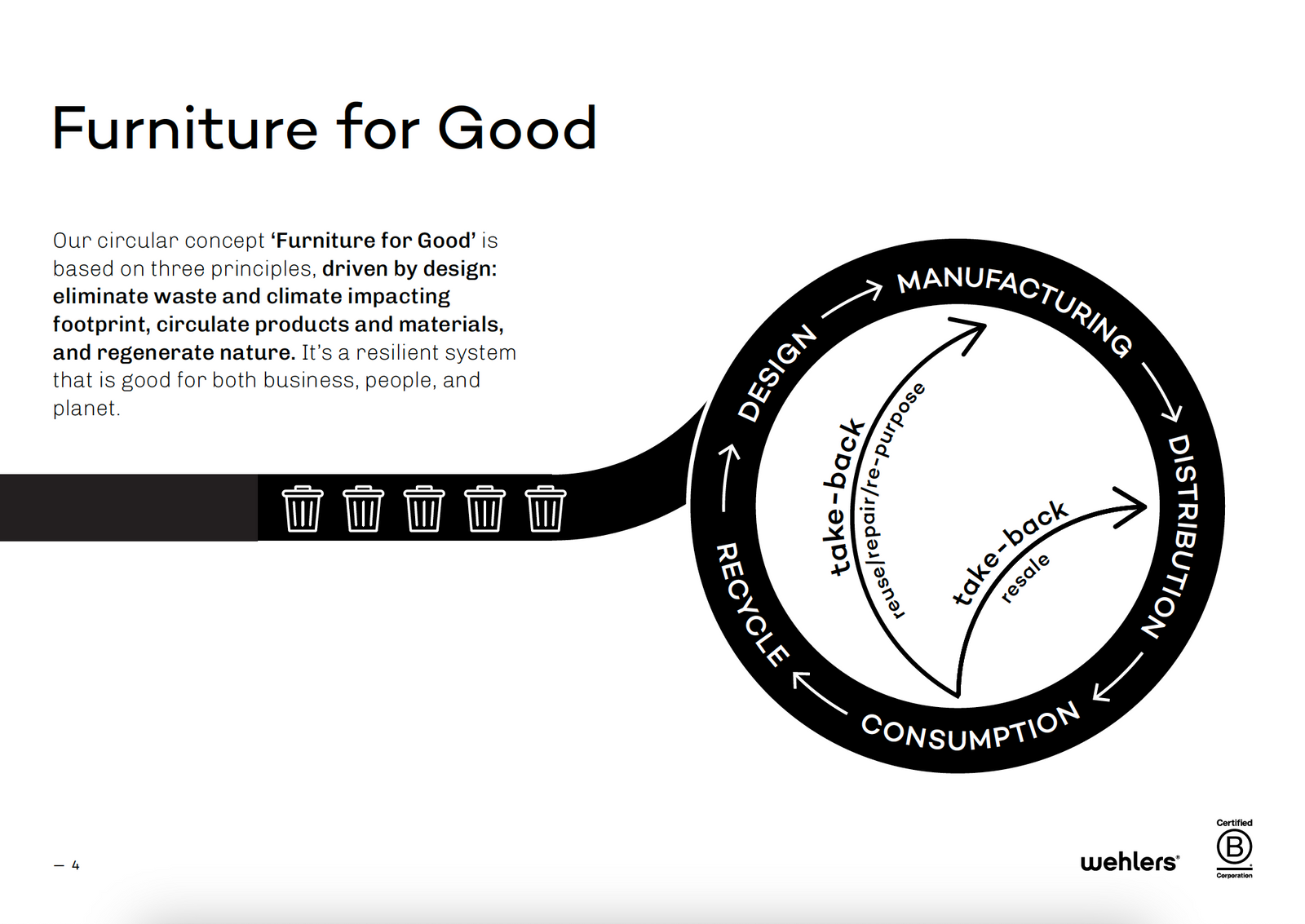b-Corp ·
chairs ·
circlelab ·
circular economy ·
danishshowroom ·
estilonordico ·
eye4design ·
furniture ·
innermost ·
low carbon footprint ·
Low Carbon Footprint for Plastic Chairs - Best for the World

A question put forward for an AI investigation. Result and Wehlers Business model below:
"Best Practices for Minimizing the Carbon Footprint of Plastic Chairs"
Footprint is Co2e: 15.2 Kgs / R.U.M.- Chair. Best for the World
- Opt for Recycled Materials:
- AI: Choose chairs manufactured from recycled plastics. This reduces the demand for new raw materials and minimizes energy consumption during production.
- Wehlers works with Recycled, Post Consumer Plastics - ONLY
- Select Durable Designs:
- AI: Invest in high-quality, long-lasting products that reduce the need for frequent replacements, thus lowering the overall carbon footprint over time.
- Wehlers: R.U.M.- Chair is designed by CF Moller Architects, and consists of 2 materials. No Ugly substances nor mixed materials
- Sustainable Manufacturing:
- AI: Support manufacturers that use sustainable practices, such as renewable energy sources and efficient production methods.
- Wehlers: choose its suppliers with two main goals:
- Does the Supplier hold the competences & Values shared?
- Will the supplier take back to re-cycle what they deliver?
- Answer to both questions must be “Yes”
- Local Production:
- AI: Opt for locally produced plastic chairs to minimize transportation emissions. This also often supports local economies.
- Wehlers: The R.U.M.- Chair is developed in Denmark
- The R.U.M.- Chair is made in Denmark
- Plastic is collected in Denmark/Austria & in the Oceans
- Assembly done in Poland
- The Recycling of the R.U.M.- Chairs after use is done in Denmark
- Product End-of-Life Options:
- Look for companies that offer take-back programs or recycling services for their products. This encourages responsible disposal and recycling.
- Wehlers: The R.U.M.- Chair is picked up after use and brought back for re-cycling





Leave a comment